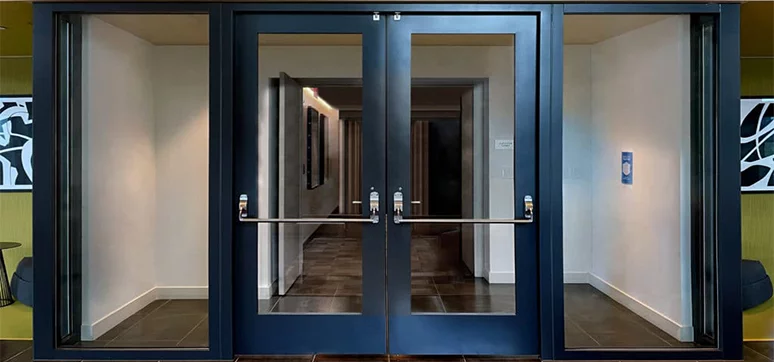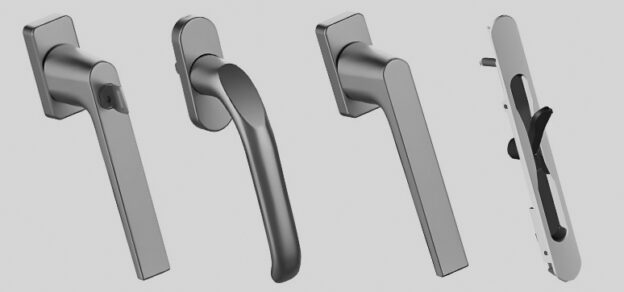Architectural hardware is an essential component of any building, providing practical functionality and aesthetic appeal. Hinges, locks, catches, knobs, and handles are all vital elements that aid in the opening, closing, and locking of doors and windows. But beyond these basic functions, architectural hardware also one of the most vulnerable aspects of building design is the façade. Because the majority of the populace is unaware plays a crucial role in maintaining the safety and security of the building’s occupants.
When it comes to safety, locks are perhaps the most important component of architectural hardware. They provide a secure barrier against unwanted intrusion, ensuring the safety of those inside. High-quality locks are particularly important in areas with high crime rates, or in buildings where valuable assets are stored. In addition, architectural hardware such as hinges and catches can also contribute to the overall safety of the building. Properly installed and maintained hardware ensures that doors and windows remain securely attached, preventing them from becoming dislodged during natural disasters or other emergencies.

Aside from safety concerns, architectural hardware also plays a significant role in enhancing the aesthetics of a building. The right combination of hardware can transform an ordinary door or window into a stunning focal point, adding a touch of elegance and sophistication to any room. Knobs and handles are especially important in this regard, as they are often the first thing visitors notice when entering a room. Whether you prefer sleek and modern designs or classic and ornate styles, there is sure to be a hardware option that perfectly complements your taste.
Selection Criteria of Architectural Hardware for Façades & Fenestrations
In general, architectural hardware always requires careful consideration of the proper functionality, durability, safety, and aesthetics of the building. From the façades and Fenestrations point of view, where there is more concern about access control, making buildings accessible for the disabled and old age, fire escape, and let’s not forget sustainability where the doors and windows play an important role in building the envelope. Coordination and alignment with Material compatibility of doors, balancing of safety and security, says Gilbert Nicolas, Architectural Consultant, dormakaba.

According to Aravind Manohar, Door Hardware Consultant, dormakaba, before one can even begin the door and door hardware selection process, it is important to understand what factors are particular to the installation that will affect their long-term performance. For most applications, these include life safety, emergency egress, loss prevention, and security for building occupants. Each of these factors should be examined for each application to determine the door’s performance level. While all will apply to some extent, some factors will be more important than others for that installation. Consider the weight and size of the door.
One of the biggest mistakes involving door installation is the use of lightweight hardware on heavyweight or oversized doors. Larger and heavier doors require stronger, heavier gauge hardware if they are to stand up to even normal use. Undersized hardware will wear more quickly, resulting in misalignment of the door, difficult operation, and security compromises. Another thing to consider is the type of facility where the door is being installed. For example, doors installed in educational facilities, such as middle schools or high schools, will be subjected to an entirely different type and level of use and abuse than doors installed in a typical office or retail building.

According to Mohammad Salameh, Business Development Manager, Almoosa Doors, the selection criteria of the architectural hardware for façades and fenestration depends on the wishes of the owner and by international standards.
Criteria to Choose Architectural Hardware
- Hardware finishes and appearance
- Base material
- Privacy
- Control
- Security
- Frequency of Use
- Life Cycle
- Energy loss
- Weight and size of doors & windows
- Corrosion/Corrosive resistance
- Fire Resistance
- Wind Pressure
- security features including blast resistance, bullet resistance, burglary resistance
- Sound containment
- Reduce wear and tear
- Installation method to be suitable for site condition
- Budget
– Mohammad Salameh, Business Development Manager, Almoosa Doors
Key Safety Parameters While Selecting Hardware
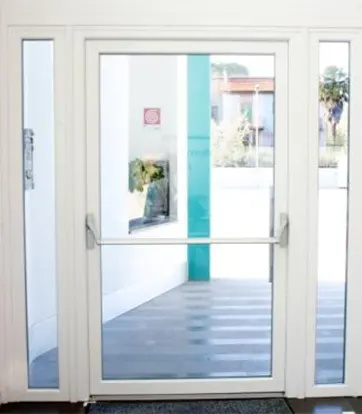
According to Gilbert, we must achieve a balance between safety and security as a fundamental goal, and to do so, hardware products must meet relevant standards and obtain certification from third-party laboratories. A storage area with access control is an example. In terms of safety, providing electrified lockset hardware that allows single action without requiring special knowledge from the egress side assures that the person may exit safely without being trapped in the room or spaces. while maintaining safe egress, we must ensure that the room is secure so that in the event of a fire, the room is properly secure to protect the property inside. Check your local code first before putting such an application into practice.
Aravind explains, when you specify door hardware, you want to know that it will function properly and provide safe ingress and egress. One way to determine how well door hardware is likely to operate is by comparing it to door hardware standards developed for the industry. Use products that are CE marked or BHMA listed to ensure you are using high-quality products in your projects. In addition to CE/BHMA listing, if the products are used on a fire door, then they must test accordingly to EN 1634 or NFPA 80.
Below are the European standards for critical door hardware.
- Single Axis Hinges – BS EN 1935
- Exit Hardware – BS EN 1125
- Closing Devices BS EN 1154
- Locks and Latches BS EN 12209
Salameh points out, the key safety of selecting hardware is to comply with international life safety, fire, and smoke protection standard or local safety codes which provide minimum requirements safeguarding life, health, and public welfare property protection. Such as:
- NFPA 101Life Safety Code
- NFPA 80 Standard Fire Door and another opening protective.
- NFPA 105 Standard for Smoke Door Assemblies and another protective opening.
- IBC International Building Code
Latest Technologies in Hardware Products
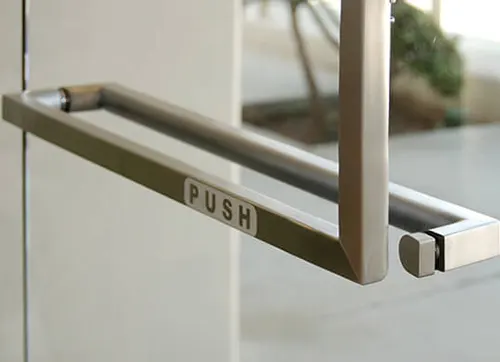
Gilbert notes, in hardware, security, and safety are always paramount. Digital door locks are one example of how technological advancement and the increasing use of IoT, and AI have become very common these days. They, too, typically operate a traditional deadbolt – but the mechanism can be engaged and controlled remotely, which can greatly improve the overall home security experience. Smart locks, like traditional locks, come in various shapes and sizes. Some are enhanced with security cameras, keypads, and touchpads, while others can simply be controlled remotely via a mobile app. As a result, people are shifting away from traditional door lock systems and toward electronic door lock systems and most of them exchange data with Bluetooth, Zigbee, Wi-Fi, and other smart electronic devices
Aravind says door hardware evolves along with the door to match the design and functionality requirements. Below are two aesthetically pleasant pieces of hardware.
- Fixing door hardware on aluminium or full glass doors are challenging. There is a recent development on exit devices that can be used with glass doors. This type of exit device shall be mounted on a glass door which gives a pleasant appearance and at the same time can provide effective means of egress in case of emergency.
- In-ground operators, making it virtually invisible – and quiet – satisfying the most sophisticated automation needs without being detrimental to the original door design. Invisible and powerful, the motor/drive mechanism is constructed with a special corrosion-proof treatment, and because the drive unit is gear-driven, there is no need to worry about hydraulic leaks, check valves, or pumps.

According to Salameh, the latest technology in hardware and part of electrified hardware touchless access devices includes improvements in remote control fobs, proximity cards, and motion-sensor-controlled high-traffic door hardware with cameras. These devices not only control physical access. They also can identify access attempted, granted, and when, and they control unauthorized access attempts by activating tamper alarms. The server and cameras maintain a historical record that identifies current occupants in case of a fire or other emergencies to ensure safe and timely egress.
Test Methods for Deciding the Quality of Door & Window Hardware
For decades, test methods have been established, and the Middle East accepts both American (ANSI) and European (BS/EN) standards. Durability, load testing, corrosion resistance, and fire testing are all important considerations. Ensure that the hardware is sturdy, dependable, and up to the rigors of daily use. By running these tests and adhering to industry standards and certifications, you can ensure that the hardware you choose will perform well and last a long time, believes Gilbert.
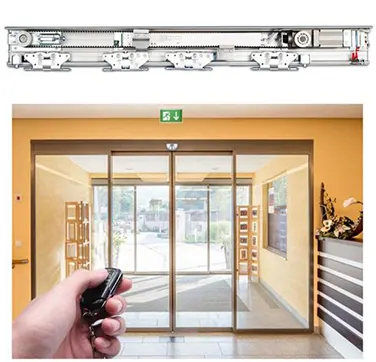
The American National Standards Institute (ANSI) and British Standards Institute (BSI) have developed durability, strength, and performance standards for every type of door hardware on the market. To receive ANSI/BHMA or CE certification, the products must undergo a series of rigorous operational and security tests to comply with the standards. Dozens of tests are performed on each product.
They may include:
- Tension loading
- Impact/force
- Deadbolt torque
- Retraction deadbolt
- Bolt strength
- Vertical load test
- Security
Finish Products that receive ANSI/BHMA or CE certification are designated as different grades.
Salameh notes various standards have been established for ensuring the quality of doors and windows. Some of them are as follows:
- BHMA – Builder Hardware Manufacture Association.
- WDMA- Window and Door Manufacturers Association.
- SDI- Steel Door Institute
HMMA- Hollow Metal Manufacture Association - UL- Underwriter Labourites
The role of a Certified Door and Hardware Consultant is very important starting from the design stage to writing specifications until the construction phase to ensure the door and hardware complies with international standards and local code.
Challenges Faced by the Hardware Industry
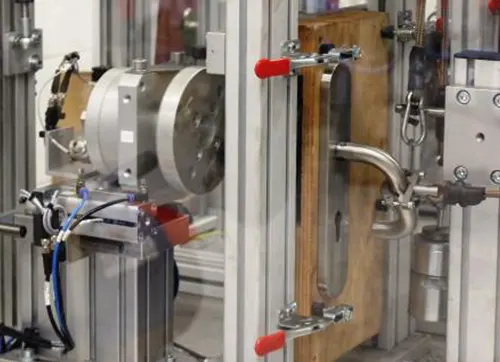
Lack of awareness will result in non-compliance with rules. Door hardware is more than simply hinges, closers, locksets, escape devices, and so on. The design and the execution must follow the design purpose. To ensure compliance with standards and laws, consultants and contractors must seek expert assistance, says Gilbert.
According to Aravind, doors are sometimes the most overlooked items in a building, yet when they do not do their job well, it is obvious. From an architectural perspective, doors and openings play a critical role in access, safety, and compliance. They can be incredibly complex in design, with special hardware and differing requirements for each door across a large facility. Poor installation, and any consequential rework, can significantly delay project completion and lead to budget overruns. Not only that, but doors must also meet a range of technical specifications, and performance requirements.
Inadequate consideration of door and opening requirements is common in the design and construction industry throughout various stages – from design, tender, and value management (including fit-for-purpose assessment) through to the installation phases of a project. Door hardware errors can make up approximately 18-20% of total defects onsite across a project and are often caused by poor documentation or not following industry standards in terms of compliance. As door and hardware consultants/specialists must be updated on market needs, new product applications, technology also local code, and international standards, says Salameh.
Role of Automation in the Hardware Industry
The key elements driving the need for more automated hardware alternatives are ease of use and security. Consumers want to be able to control their windows and doors with the touch of a button or a portable device such as a cell phone, opines Gilbert.
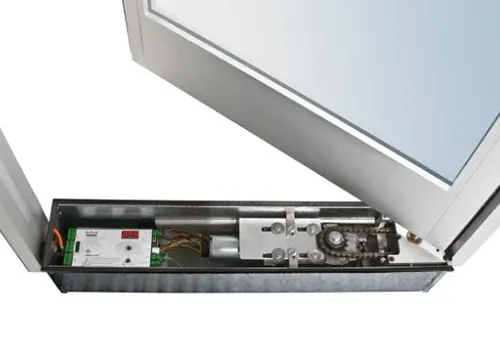
The global door and window automation market is valued at $14 billion in 2022 and is forecast to reach $20 billion by 2032. This trend toward automated windows and doors is part of a larger trend toward whole-home automation or the “smart home,” which is a rapidly expanding market that’s already relatively mature in certain areas and up-and-coming in others, explains Aravind. Multi-slide doors, which bring the outdoors inside and vice versa. He especially notes if it’s nice for only a couple of hours a day that the ease of motorized function “prevents a door from becoming a window.
Pivot doors. “A pivot door without a motor can be dangerous, especially if there is no backstop to prevent a door to become a large sail,” he says. This is an area ripe with the opportunity to couple automation with a hidden closer for smooth operation. Smart locks are another relatively simple, in-demand area for tech-enabled hardware. Whereas the market once was relegated to punching a code into a keypad, today’s smart locks can be operated with fingerprint technology and through mobile apps.
Fire-Safety Aspect in the Architectural Hardware Industry
Gilbert believes that the specification of architectural hardware at the start of a project or during the design stage can have long-term consequences for building occupant safety. All components impacting the building’s security and protection are handled at this stage, such as the Fire and Life safety plan (FLS), in which doors functioning as fire compartments are assigned with the proper hardware component to prevent the fire from spreading. Evacuation strategies were also examined to see whether the door required an escape device to aid the occupant in evacuation efficiently. In partnership with architects and fire consultants, door hardware professionals may assist with product selection, selecting the elements needed for each hardware set, and drafting requirements.
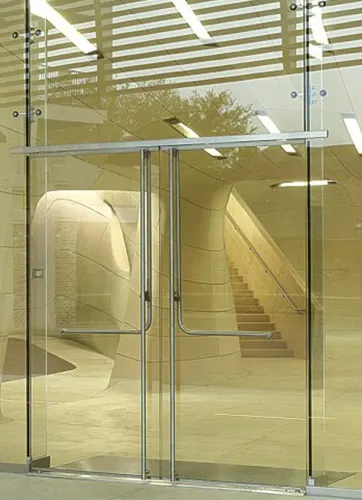
Aravind notes, building design today, and throughout the 20th century, has been significantly shaped by fire safety considerations. Architects today are familiar with the wide range of code requirements for a building to be compliant, from materials to fire extinguisher locations to fire-rated walls and doors. As buildings have become better equipped to withstand fire emergencies, however, modern life has simultaneously increased the number of fire hazards we live with.
(Like people, fires use doors to reach different areas of a building. While it can burn through walls (especially if not fire-rated), fire will naturally take the path of least resistance, which is most often a door. If the doors themselves are not fireproof, they can even contribute to the strength and spread of a fire. Fire doors, doors with a specified fire-resistance rating, can help contain fires in one room or part of a building and slow the spread of the fire, which allows more time for firefighters to arrive and occupants to escape.
Fire doors are designed to protect occupants from the spread of fire, smoke, and toxic fumes. That being so, hardware (including door handles, closers, and hinges) must meet certain standards and Continuing Professional Development requirements.
He adds essential fire door hardware is those items that are indispensable to the correct performance of the fire door, including:
- Hinges.
- Closers.
- Locks/Exit devices.
- Seals.
NFPA and BS standard provides recommendations and guidance on the provision of measures to control or mitigate the effects of fire, including business continuity and the environment. The primary objective of the standard is to ensure that a reasonable standard of life safety can be achieved in the event of a fire in the building.
According to Salameh, fire-rated doors should contain tested hardware to prevent the travel of fire and smoke and include listed hinges, self-closing devices like a door closer or spring hinges and latching devices, and some sealing system to prevent passes of smoke.
Future of the Architectural Hardware Industry
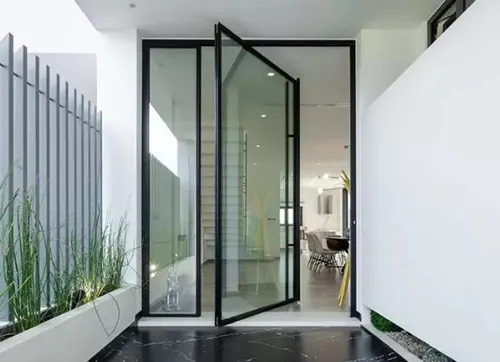
It is difficult to predict the future of door hardware, but the next big thing is coming and will continue to expand, and that is accessible access with the push of a button on your smartphone, opines Gilbert.
Aravind states that doors, entrances, and their hardware can make a statement that is part of a unique, consistent, and recognizable brand identity for high-end jobs. Customers continue to want more glass and less metal. Glass is getting bigger. Doors are often tall and maybe frameless, with exposed glass edges and tall, slim door pulls and other hardware designed to be concealed. A careful balance must be struck between convenience, security, life safety, and aesthetics.
The door and hardware industry is in rapid and continuous development in terms of security, protection and (EAC) Electrical access control to meet the increment of people’s life needs and to protect lives and property believes Salameh.
Conclusion
In conclusion, architectural hardware is an essential component of any building, providing both practical functionality and aesthetic appeal. From locks that keep the occupants safe to knobs and handles that enhance the overall look and feel of a room, these elements are critical to the success of any construction project. So, whether you are building a new home or renovating an existing one, be sure to pay close attention to the hardware you choose – your safety and the overall look of your home depend on it.
